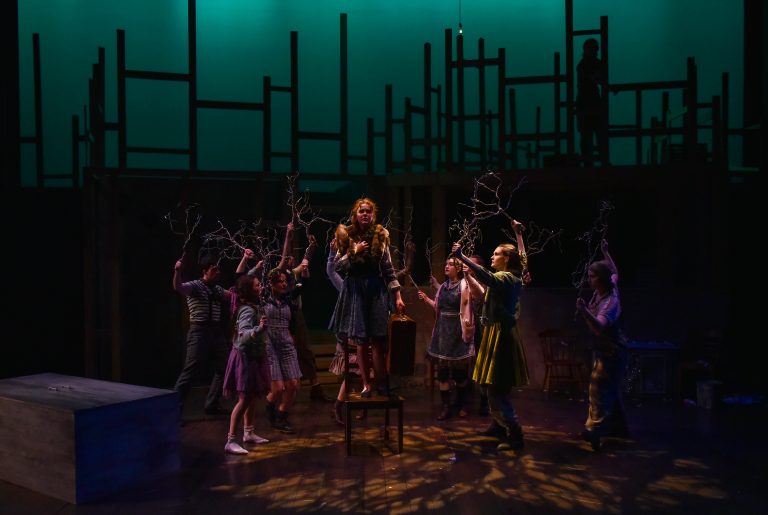Malaga Adventure: Why Lizzie Bright is a must-see
by Sarah Erkert, Production Dramaturg
Sometimes, as a dramaturg, you feel like much of the research you do on a play is for naught. The material can be dense and the relevance questionable, but you plunge through it hoping to find something that inspires you and that can inform the production. For Emerson Stage’s production of Lizzie Bright and the Buckminster Boy, that inspiration came thanks to a visit that eighteen company members made in late summer to Malaga Island, the setting of our play. Thirteen-year-old Lizzie Bright Griffin describes the island she calls home as a magical place:
Modern historians now believe that Malaga Island represented one of the most successfully integrated mixed-race communities in the United States until quite recently…but the people of nearby Phippsburg did not celebrate Malaga’s multiracial and multicultural heritage as Lizzie did. Driven by distrust — and economic interests — the more affluent community engaged in a public campaign of slander and yellow journalism against the island which ultimately culminated in the Malaga community’s eviction from the island in 1912. While Lizzie Bright and the Buckminster Boy focuses more on the friendship between Malaga resident Lizzie and Phippsburg newcomer Turner, this historical conflict provides the backdrop for our play…and a reason for our pilgrimage.
As the fog cleared and our sea kayaks neared a small shell midden beach on the north side of the now uninhabited island, Malaga appeared exactly as Lizzie described it. Beautiful fir trees rose above us, and the opaque blue water met the solid rock cliffs of the mainland just a few hundred yards off the western edge of the island. We stepped onto the thin, moss-covered soil where Lizzie and the islanders had lived, and looked over to the neighboring town of Phippsburg, the town that had considered the shanties and mixed race community of Malaga an eyesore. It was hard to understand their point of view, as the place today does seem like “the most perfect place God ever created.” Though all the island’s structures were razed long ago, the spirit of its community still lingers.
Those who have read the young adult novel on which the play is based may recall how the wind is itself a character in the story, whispering at times, roaring at others, as it foreshadows and comments on the action of the story. Author Gary Schmidt must have visited the island, as the wind is indeed as ever-present as he describes it. It whistles on the windy shores, rustles through the tall firs, and carries the slightest hint of a musical tone. There is only one place on the island, not far from its eastern edge, where the wind is silent and respectful: the site of the community’s former cemetery. Its graves were long ago exhumed by the State of Maine, but the natural hollow where they had rested still seems to hold their spirits in peaceful silence. It’s just as Lizzie explains to Turner, “See, spirit never dies when it’s where it belongs.”
It’s hard not to feel connected to the community of Malaga when you’re standing in the middle of that silence, but with that connection also comes responsibility. The story of Malaga was brushed over and ignored for nearly a century. The descendants of Malaga were shamed for their heritage, and the neighboring communities talked of it in hushed voices. Thanks to the work of some Maine institutions, such as the Salt Institute for Documentary Studies in Portland, WMPG-FM, the Maine State Museum, and the Maine Coast Heritage Trust, the legacy of Malaga lives on. Descendants of the families on Malaga Island have shared their stories and memories so the lessons of this time will not be forgotten. It’s just as Lizzie says: “How you going to remember what they meant to you if you don’t ever speak on ‘em?”
We will, and we are, this November in the Semel Theater.
For tickets, or more information about Lizzie Bright and the Buckminster Boy, click here.


